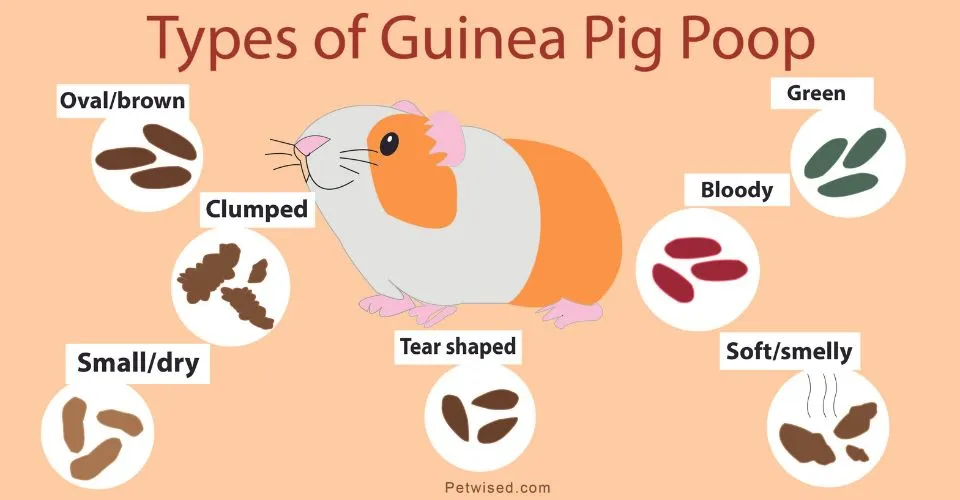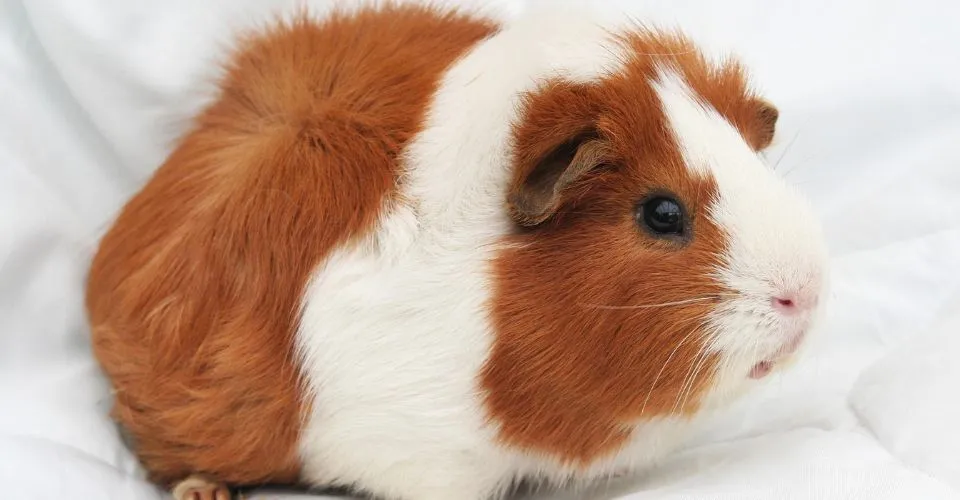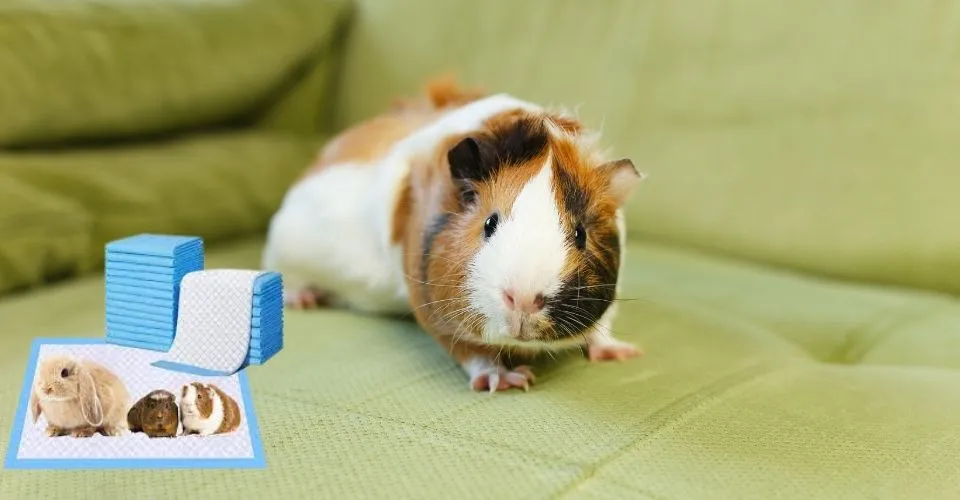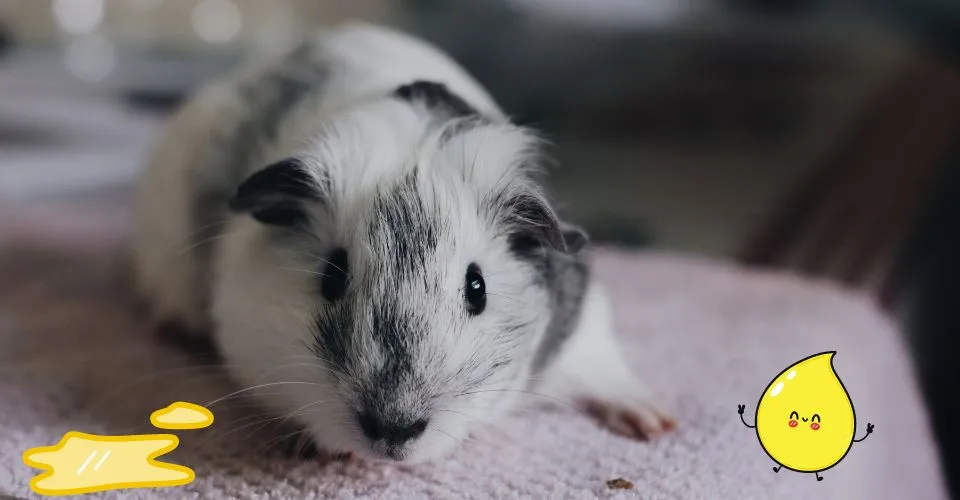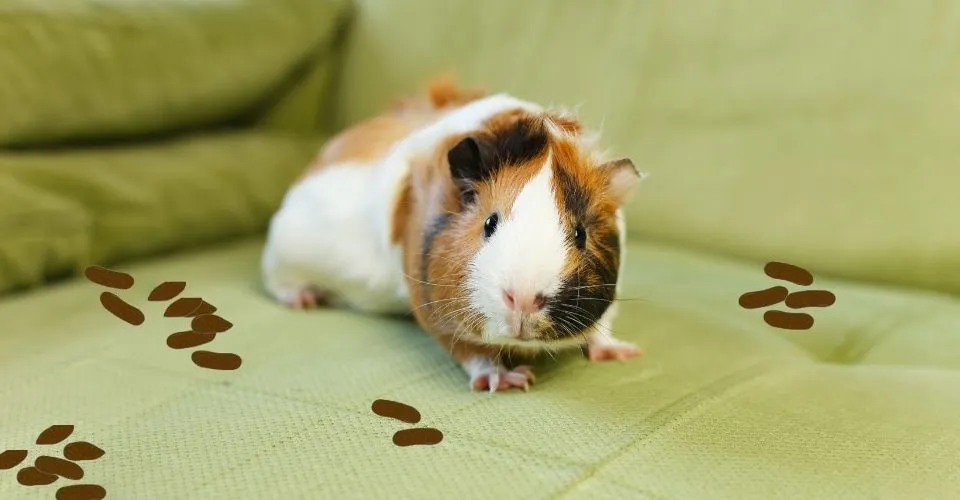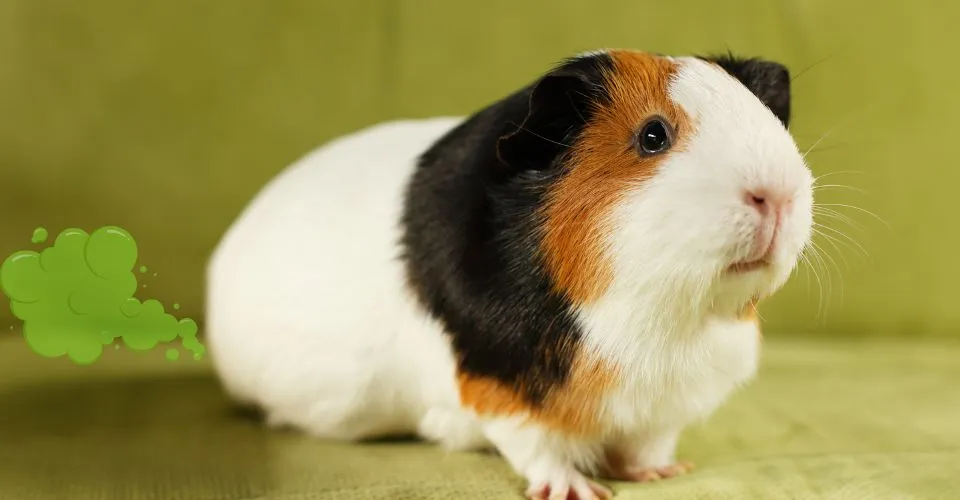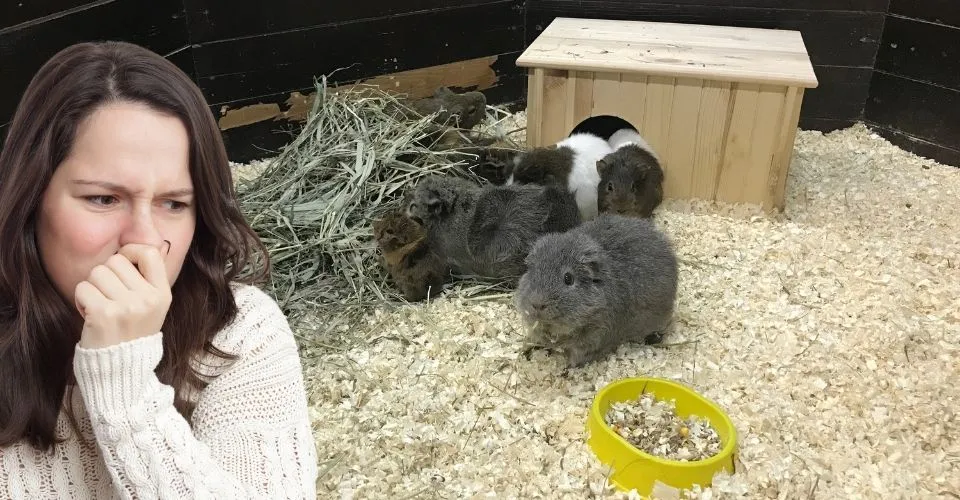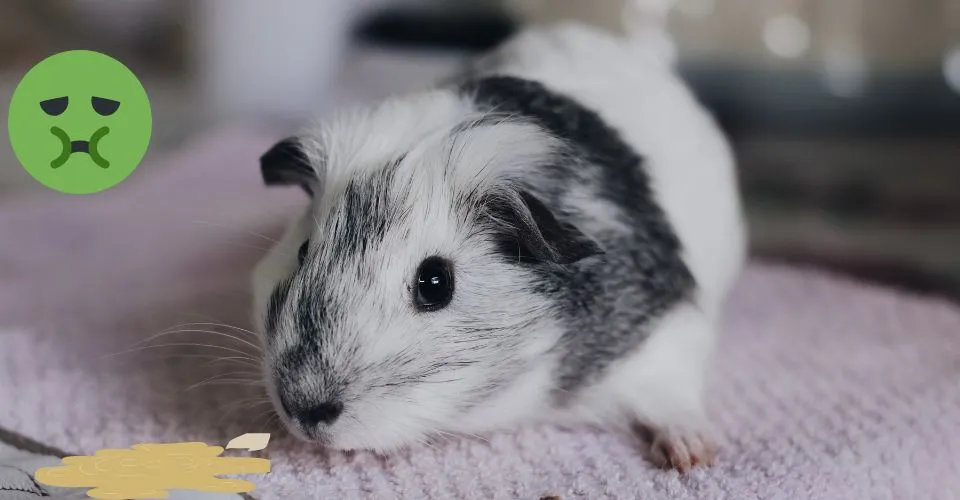Blankets may seem like the perfect addition to a guinea pig’s habitat, offering warmth and coziness while creating a snug environment for our little companions. But we must remember the safety implications for guinea pigs when adding blankets.
Understanding the delicate physiology of guinea pigs as well as any risks they might be exposed to is crucial before using blankets in guinea pig cages. In this article we’ll explore guinea pigs love-hate relationship with blankets, uncovering facts for their well-being to create a safe and welcoming space for these adorable animals!
Understanding Guinea Pig Physiology
Guinea pigs have small tracheas and even smaller chest cavities and a very complex upper respiratory tract, making them susceptible to respiratory issues. Moreover, guinea pigs have a very high metabolic rate and thus require continuous access to fresh air for the proper functioning of their digestive system. Given that Guinea pigs have a very delicate respiratory system that is quite easily disturbed, guinea pig owners must strive to provide their piggies with a clean and properly ventilated environment and be careful when making changes, like introducing blankets, to guinea pig enclosures.
Blankets and the Risk of Suffocation
Although blankets may seem like an inviting addition to our guinea pig’s habitat, they pose serious suffocation risks that must be considered and managed accordingly in order to keep our furry friends safe.
One of the primary issues associated with blankets is their potential to restrict airflow. Guinea pigs require constant access to fresh air in order to breathe effectively. Placing a blanket over them or their enclosure can obstruct this supply, leading to lower oxygen levels and an increase in carbon dioxide levels, both of which are detrimental to overall well-being and may even result in suffocation.
One potential risk associated with keeping guinea pigs as pets is their tendency to get trapped or entangled in fabric blankets. Their active curiosity may lead them to explore and chew on it, potentially leading them into dangerous situations wherein limbs, claws, or teeth become stuck within it causing injury or even suffocation if they cannot free themselves.
Guinea pigs are opportunistic chewers. Given their always-growing teeth, guinea pigs tend to chew on everything they could lay their teeth on. From biting their cage to eating pee pads and nibbling on blankest and fleece liners, guinea pigs chew on everything.
By being aware of potential suffocation risks and taking precautionary steps to create a secure environment for our guinea pigs, we can ensure they live longer lives with us.
Factors Affecting Risk of Suffocation
Below we have discussed various factors that influence the risk of suffocation for guinea pigs:
1. Age and Health
Age and health can significantly influence how guinea pigs navigate potential suffocation risks. Older animals or those with preexisting respiratory issues may be more prone to breathing difficulties.
2. Blanket Type and Thickness
Different blanket types have differing degrees of breathability. While heavy or thick blankets may reduce airflow, lightweight breathable ones are less likely to restrict the airflow. When choosing blankets for your piggies, consider those made from materials that allow air circulation for reduced risk of suffocation.
3. Environmental Factors
Temperature and humidity levels within their environment can significantly impact risk. Too much humidity combined with an enclosed space can create a damp environment that threatens air quality; excessively warm temperatures increase the chance of overheating or suffocation risks – thus it is vitally important that guinea pigs live in comfortable, well-ventilated spaces.
Safe Practices for Guinea Pig Bedding
Assuring the health and happiness of our guinea pigs requires following sound bedding practices. By following these guidelines, we can create a safe environment for our fuzzy friends:
- Select Guinea Pig-Friendly Bedding:
Select bedding materials specifically tailored to guinea pigs for safety and comfort, such as paper bedding, hay, or fleece liners that provide both warmth and safety.
Also, consider the fact that guinea pigs have long nails, which might be prone to get caught up in blankets and getting torn off.
- Choose Breathable Materials
Prioritize bedding materials that promote airflow by choosing materials like paper-based bedding or fleece liners that allow air to circulate freely and promote ventilation. Avoid compacted or clumped-together materials that obstruct airflow.
- Maintain Cleanliness
Regularly clean and change the bedding to prevent the build-up of waste, odor, and bacteria that could result in respiratory issues for your guinea pigs and other health complications. Try to clean their enclosure at least once weekly.
- Adequate Ventilation
To ensure optimal airflow for the guinea pig’s enclosure, ensure it has adequate ventilation by leaving the cage free from blankets or other materials that obstruct airflow and inhibit its circulation. Good ventilation helps avoid accumulations of moisture while maintaining optimal air quality levels.
- Monitor Temperature and Humidity Levels
Guinea pigs can be highly sensitive to changes in temperature and humidity levels, so to create the ideal environment, keep temperatures within the recommended range—60 to 85 degrees F—while monitoring humidity levels to avoid too much moisture build-up.
- Regularly Inspect Bedding and Enclosure
Conduct regular inspections on both bedding and enclosure for any signs of damage, hazards, or potential entanglement risks to detect potential injuries to your guinea pigs from loose threads, strings or materials that could tangle with them and pose the risk of injuries like broke guinea pig nail or suffocation to ensure optimal conditions are in place for their comfort and wellbeing.

By adhering to these safe practices, we can ensure our guinea pigs enjoy a comfortable and secure bedding environment that promotes their health and well-being. Prioritize safety first and adjust accordingly based on individual needs.
Signs of Respiratory Distress in Guinea Pigs
Respiratory issues can be life-threatening in guinea pigs and should receive immediate veterinary treatment as soon as they appear. Therefore, it is crucial that guinea pig owners recognize the signs of respiratory distress in their guinea pigs.
Below we have discussed some telltale symptoms of respiratory distress in guinea pigs:
1. Sneezing and Coughing: Frequent or persistent sneezing and coughing can indicate respiratory irritation or infection. If your guinea pig exhibits these signs it could be an indicator of respiratory distress.
2. Labored Breathing: It means that the guinea pig is having difficulty breathing properly and is probably experiencing shortness of breath. Carefully monitor your guinea pig’s breathing pattern. If rapid, shallow, or labored breathing occurs with visible chest movement or flared nostrils, take your guinea pig to a veterinarian.
3. Wheezing or Noisy Breathing – Unusual sounds such as wheezing, rattling, or clicking during breathing may indicate airway obstruction or infection.
4. Nasal Discharge: Excessive or colored nasal discharge such as mucus or blood is unusual and could indicate an infection in the respiratory system of your guinea pig.
5. Reduced Appetite and Activity: Respiratory distress can result in decreased appetite and overall activity levels in your guinea pig.
If you notice any of these symptoms in your guinea pig, it is imperative that they receive immediate veterinary attention. Untreated respiratory issues in guinea pigs can quickly escalate and become life-threatening.
Make sure to regularly inspect and monitor your guinea pigs’ respiratory health, maintain an odor-free living space, and provide ample ventilation in order to minimize respiratory issues.
FAQs About Piggies And Blankets
A. How Can You Give Guinea Pigs Blankets?
Although guinea pigs love to snuggle and burrow under blankets, guinea pig owners are not advised to give blankets to their piglets. But if you do give it to them, ensure that it is properly tucked or secured to prevent guinea pigs from burrowing underneath it or chewing on it. You can instead offer them cozy spots, hides, and beds to snuggle in.
B. Why Do Guinea Pigs Hide Under Blankets?
Guinea pigs may burrow under blankets in an attempt to create a cozy and safe environment that mimics their instinctual need to find safe spaces to rest, hide or reduce stress. Besides guinea pigs like darkness. So, the darkness and warmth provided by blankets may help guinea pigs feel protected while decreasing stress levels. However, proper ventilation must be maintained to reduce potential suffocation or overheating risks.
C. Should I Put a Blanket Over My Guinea Pig’s Cage?
No, you should not cover your guinea pigs’ cage with a blanket, at least not completely. Covering the cage completely will reduce airflow, leading to poor ventilation, reduced oxygen levels, and increased carbon dioxide levels, increasing the risk of suffocation. Guinea pigs require fresh air for maintaining respiratory health. If you are to put a blanket on your guinea pigs’ cage, make sure that it is lightweight and breathable.
D. How can I tell if my guinea pig is comfortable under its blanket?
Monitoring your guinea pig’s behavior and body language is the key to understanding their level of comfort under a blanket. Signs of relaxation include relaxed posture, normal breathing rates, and contented behaviors like eating, grooming, or exploring. But it’s essential that proper ventilation be ensured so as to reduce risks such as suffocation or overheating.
E. Are there alternative bedding solutions that are safer than blankets?
Yes, there are other bedding options that may be considered more appropriate for guinea pigs than blankets. These options include paper-based bedding such as shredded paper or pellets as well as fleece liners that provide comfort, absorbency, and easy maintenance without risk of suffocation or poor ventilation. Remember to clean and replace bedding regularly to maintain a hygienic environment for your guinea pig. Guinea pigs are fastidious creatures and do not smell but when their cage is not cleaned, they might start to smell bad. So, if you do not want your guinea pig cage to smell like a pig barn, clean it regularly.
Final verdict: Can Guinea Pigs Suffocate Under Blankets?
Yes, guinea pigs can suffocate under blankets due to restricted airflow and inadequate ventilation. Their respiratory systems are delicate. So, giving them blankets or covering their cage is never a good idea. It could create an oxygen-starved environment in their cage, increasing the risk of suffocation. To minimize risk and maintain the health and safety of your guinea pig, prioritize providing a well-ventilated environment that promotes fresh air circulation instead.

